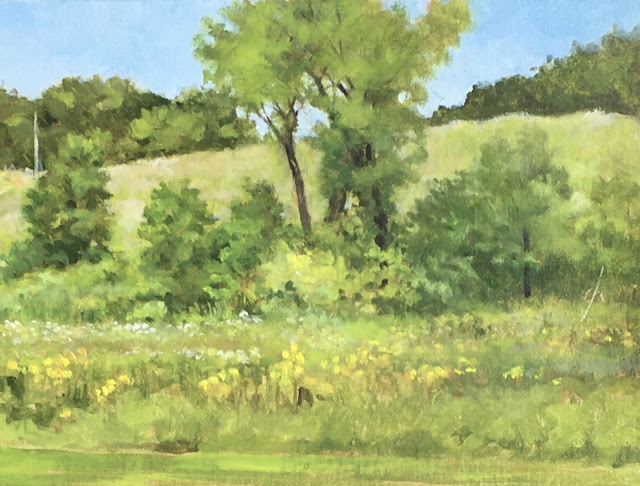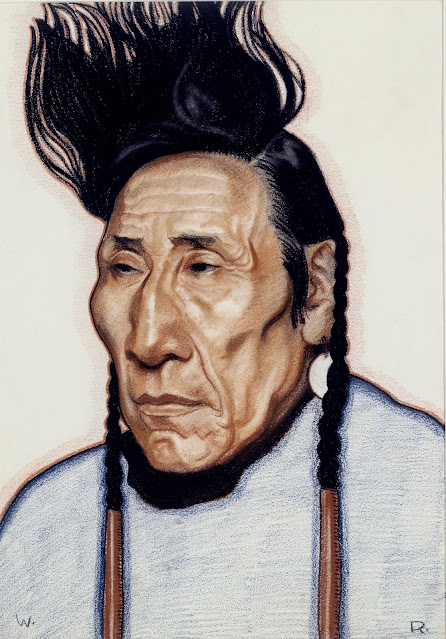My stint as Artist in Residence at the Whiterock Conservancy here in central Iowa ended nearly a week ago. Three weeks living and working there were in many ways a personal retreat. With only drawing, painting, looking (seeing) and the small tasks of day-to-day living, the world seems to expand. The Conservancy is about six or seven square miles of preserved and/or restored lands, and my quarters were about in the center. The terrain is varied, from the valley and wetlands of the Middle Raccoon River, to now-rare oak savanna, to the rolling prairies that most of us associate with Iowa. The land has been husbanded and restored, with much of the area surrounding the river growing undisturbed for hundreds of years. In short, paradise for a landscape painter. Beyond the beauty of the scenery, the peace and serenity at The River House is incomparable. The sounds of the planet are audible there--the call of a catbird, a distant barking of a night-traveling coyote, a faint bovine bawl. And the darkness down by the river is nearly total, so that the stars blaze at night.
With such riches surrounding me, it was easy to abandon much of my electronic connection to the world. No television and no radio, little attention to social media, and fewer references to email meant much time for thought, observation, and even a kind of meditation. It is rare in many lives to have such an opportunity--to simply "be" and live in the moment. The residency was an eye-opening, remarkable experience, a true gift.
 |
Hoff, "Middle Raccoon, Whiterock," wc on paper
|
As a plein air enthusiast, it was difficult for me to decide whether to load up my gear in the ATV or paint in the small studio, so in the end my output was through both, which is ideal. This land is as it always was, festooned with yellow coneflowers, Queen Anne lace, several kinds of sunflower, Joe Pye weed, and more. The effect is big drifts of color along the banks of the river. The oil below was done in the studio, based on a watercolor study (right) and personal photos.
 |
Hoff, "Riverbank," oil on panel, 11x14
|
I did a number of plein air works too. Across the river from the barn a rounded hill looms, topped by
old dark oaks. It slopes up to the northwest, and is covered by tall grasses. Perhaps the bluff was cleared and farmed once, but for whatever
reason there is a meadow at the top, fronting the oaks. The lay of the land means its appearance changes a lot during the day. It was an
interesting exercise to paint the scene at different times.
The echoes of the residency will no doubt sound through my work for the next weeks and months.





















